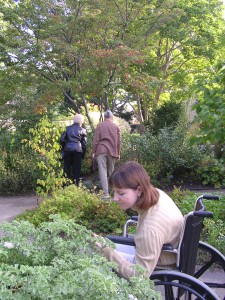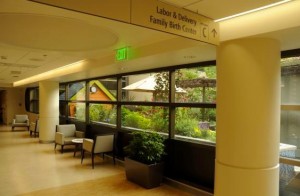Each month in our Open Voices blog we share insight from leaders in our communities who are advancing what it means to have sacred, open green spaces in our cities. This November we share in recognition of the 2014 Annual Meeting of the American Society of Landscape Architects.
Recently, researchers and landscape architects collaborating in TKF’s Nature Sacred Award program met for a multi-day meeting. The convening coalesced into an impromptu group discussion about how to encourage more evidence-based landscape design. How can landscape architecture firms include more scientists and health practitioners in their teams? Or, how do we promote healthcare design standards that practically meet user needs?

The desire for more cross-discipline collaboration stems from problems of lack of funding and lack of awareness. Architecture, whether landscape or object, can sometimes design beautiful spaces that do not actually meet user needs. One example mentioned during the discussion is a healing garden poorly designed for cancer patients. When in chemotherapy, the skin is more likely to be burnt and patients are advised to wear sunscreen and avoid direct sun. But this healing garden was designed without shade structures, essentially providing an inhospitable environment. Access to (and application of) research findings and health protocols could have avoided this design flaw. During the discussion, the group called for more research-based design projects and guidelines, but cautioned against prescriptive design. One landscape architect stated, “We need wise data, the wherefores, if we are good designers we’ll know how to use it”. The question going forward is whether such advice and informed design standards are already in abundance but too scattered (see the celebrated text from Clare Cooper Marcus and Naomi Sachs and the seven therapeutic garden guidelines from The American Horticultural Therapy Association), or whether more “centralized” and applied design standards depend on the future of funding and scientific evidence.

A therapeutic garden in a Portland hospital (supported by TKF) is an example of interdisciplinary design that can happen if funding and initiatives are in place:
“The Terrace Garden at Legacy Emanuel was designed with the same standardized interdisciplinary design process that the six-hospital health system has used for 10 other hospital gardens, most of which are for specific patient populations, such as hospitalized children or stroke or burn patients. A 20-member team of key stakeholders, including a landscape architect, physicians, clinical and administrative leaders from the hospital, community partners, and past hospital patients, met three times in 2012 to develop their vision for the garden.”
The American Society of Landscape Architects also provides design recommendations according to many health needs:
“Landscape architects design therapeutic gardens for use in nursing homes, which are not only known to decrease the symptoms of the patients suffering from neurological disorders like dementia and Alzheimer’s, but also decrease the stress and anxiety of the care-takers and nurses in these facilities. Taking care to address the needs of the aged and patients suffering from these disorders, landscape architects design gardens with paved paths for ease of walking, ample places to sit, raised planting beds to be enjoyed by people in wheelchairs and ample opportunity for people to be engaged with via the senses smell and touch, as well as sight.”
